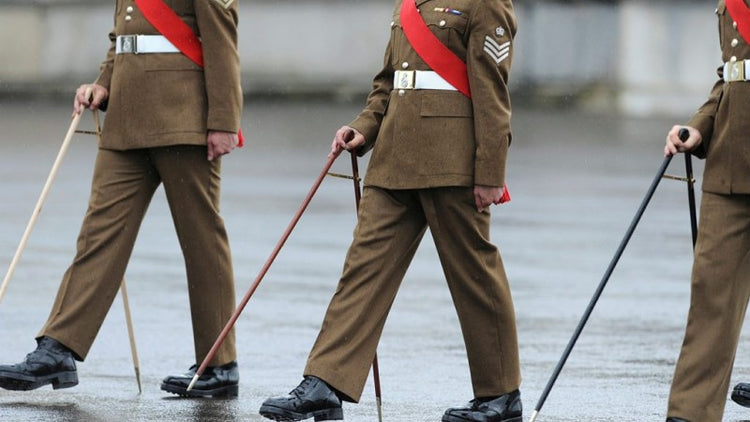The pace stick, a vital symbol of authority and discipline in the Commonwealth military forces, holds a rich tapestry of history and tradition. Primarily associated with the Army, this iconic tool traces its origins back to the Roman Empire, where it was utilised by centurions to ensure uniform marching paces among their troops.

In Australia, as with other Commonwealth countries, the pace stick is inseparable from the image of the Regimental Sergeant Major (RSM). While on parade, an opened pace stick held under the arm signifies that the RSM is "on duty". The intricate process of 'reading' the stick, which involves adjusting it to an exact stride length, is a revered tradition that has been passed down through generations.
The pace stick is more than just a tool; it is a tangible representation of the timeless values that the Army upholds - discipline, precision, and unity. The rituals surrounding it, from the manner of carrying to the precision in setting it, serve to reinforce these principles among personnel. In essence, the pace stick carries a resonance that extends beyond its physical presence, encapsulating the ethos of the military institution itself.
"The pace stick is used to gauge the correct length of pace and measure distance between ranks for uniformity and cohesion," explains WO2 Steven Boyle, the Sgt Maj for IMJIN Company at The Royal Academy Sandhurst

In artillery units, the pace stick takes on an equally important role, albeit with a unique twist. Artillery gunners use it as a crucial tool for calculating the precise angle and direction for launching projectiles. This meticulous process demands exactitude - even a slight deviation can drastically alter the trajectory, thereby affecting the effectiveness of the operation. The pace stick, with its adjustable length, offers the artillery units an accurate means to measure distances and alignments, ensuring a successful mission. Thus, it becomes an instrument of precision and accuracy, qualities highly valued in artillery practices. Its usage in such a critical context underscores the pace stick's significance not just as a symbol of authority, but as a practical tool instrumental in the operation of the Commonwealth military forces, including Australia's.
The pace stick is used to measure the correct length of pace. Rhythm and uniformity in marching can be achieved by using the pace stick as well as the drum and metronome. Correct pace length is necessary, not only for ceremonial purposes, but also to reduce fatigue on long marches and set the standard of accuracy required of soldiers.
The pace stick is the only instrument of the three which the in- structor must manipulate himself. Constant practice is required to master the swinging of the stick.
To train the students, the instructor should march alongside the leading soldier, using the pace stick to control the length of pace. The natural tendency is to step too long, causing a bad marching posture and straggling in the squad. As progress is made, the instructor should check the length of pace by march- ing behind the students, using the pace stick. He should highlight to the students any faults which occur in the length of pace so that the correct pace becomes a habit.

